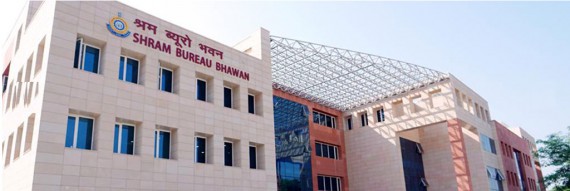Consumer Price Index Numbers for Agricultural and Rural Labourers
CONSUMER PRICE INDEX FOR AGRICULTURAL LABOURERS & RURAL LABOURERS (BASE 2019 = 100)
The Labour Bureau, under the Ministry of Labour & Employment, Government of India, has released the revised Consumer Price Index Numbers for Agricultural Labourers (CPI-AL) and Rural Labourers (CPI-RL) with effect from June 2025, adopting a new base year of 2019=100. This revision is based on the methodology approved by the Technical Advisory Committee on Statistics of Prices and Cost of Living (TAC on SPCL).
Key Features of the Revised Series:
1. Base Year Revision: The base year has been updated from 1986-87 (agricultural year) to 2019 (calendar year).
2. Expanded Coverage: The revised series now covers 34 States/UTs, a significant increase from 20 States in the previous series.
3. Larger Village Sample Size: Price data is now collected from 787 representative sample villages, up from 600 villages earlier, ensuring broader and more inclusive representation.
4. Updated Consumption Pattern: The consumption basket has been revised using data from the 68th Round of the Household Consumption Expenditure Survey (2011-12), replacing the outdated 38th Round (1983). The number of items has increased to approximately 150–200 per State, as against 65–106 in the old series.
5. Improved Methodology: The index compilation method has shifted from the Arithmetic Mean (AM) to the Geometric Mean (GM), aligning with international standards.
6. COICOP Classification: The revised indices follow the latest Classification of Individual Consumption According to Purpose (COICOP) – 2018, enabling international comparability.
Price Collection and Compilation: The responsibility of collecting rural retail prices lies with the Field Operations Division (FOD) of the National Statistical Office (NSO), under the Ministry of Statistics & Programme Implementation. Prices are collected monthly from 787 sample villages, distributed across 66 NSS regions nationwide.
->Price collection is staggered across the four weeks of a month, with approximately one-fourth of the sample covered each week.
->Data is gathered from local rural markets, typically on a fixed price collection day — such as ‘Haat’ days for non-daily markets and any market day for daily ones.
->Collected prices are scrutinized and processed by the Labour Bureau. Any discrepancies are addressed in consultation with NSO field offices and, if necessary, through field inspections.
Frequency and Timeliness of Release: The CPI-AL and CPI-RL indices are released on a monthly basis, with a lag of 20 days, ensuring timely and policy-relevant information for indexation and other socio-economic analysis.





